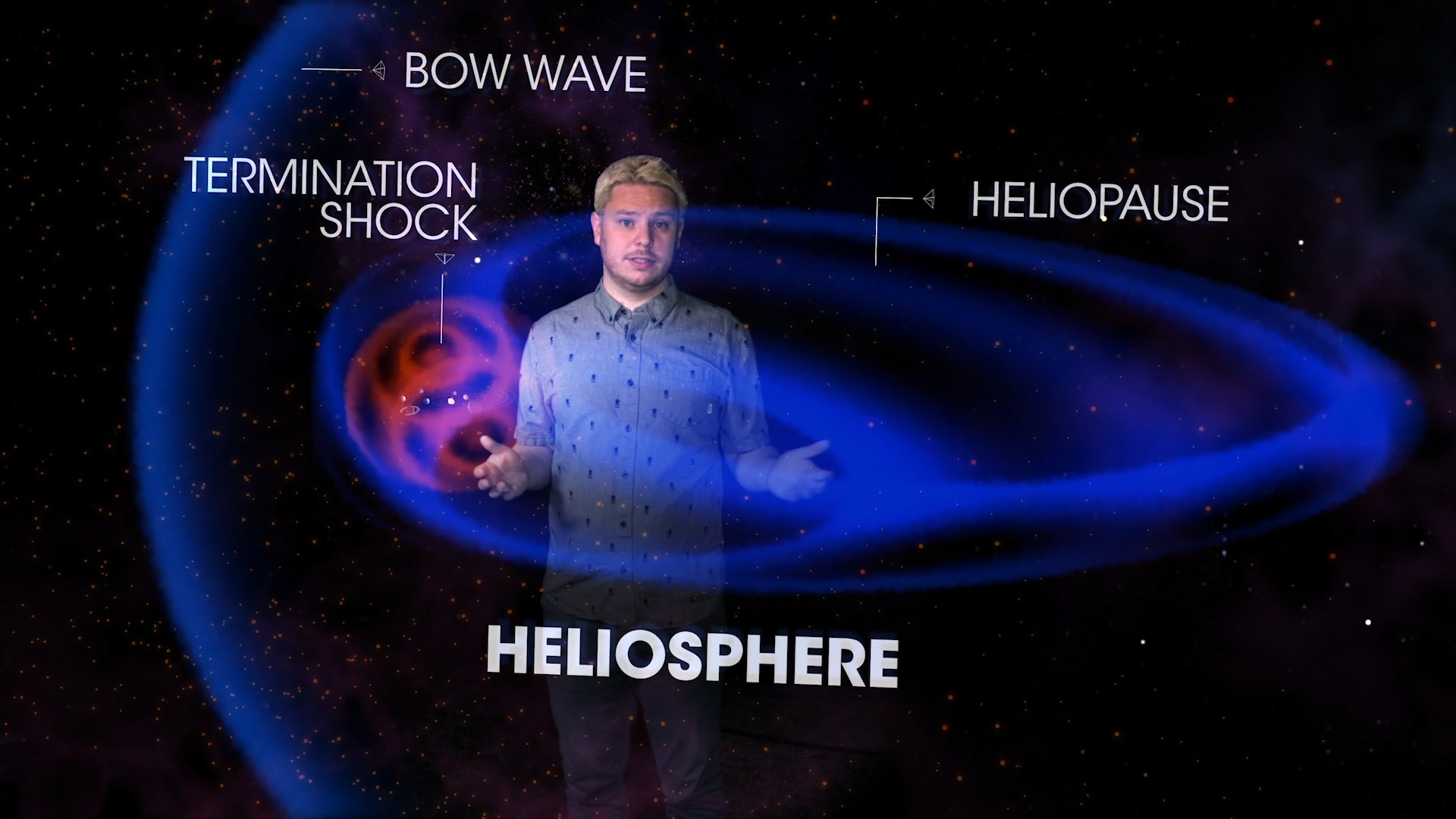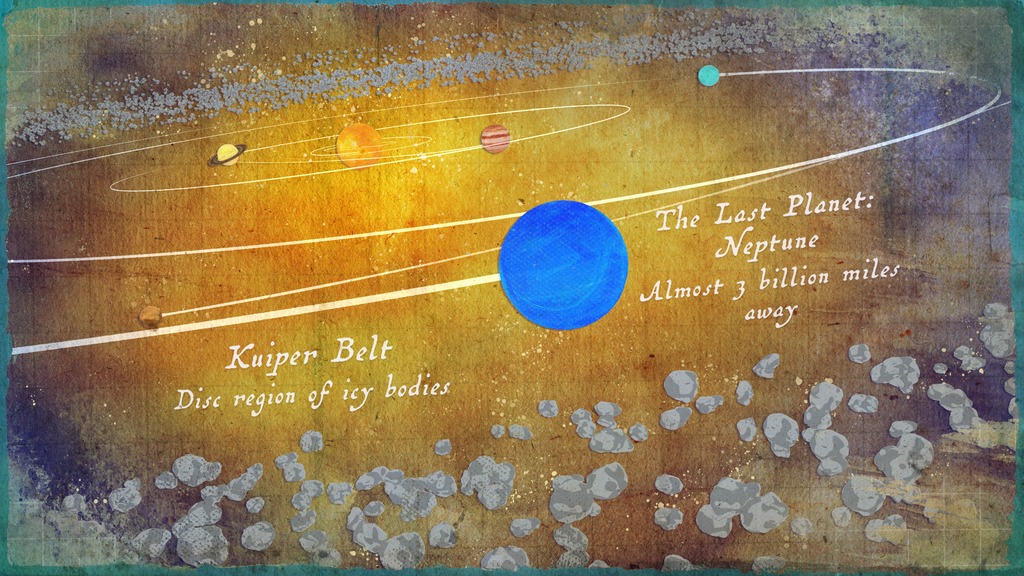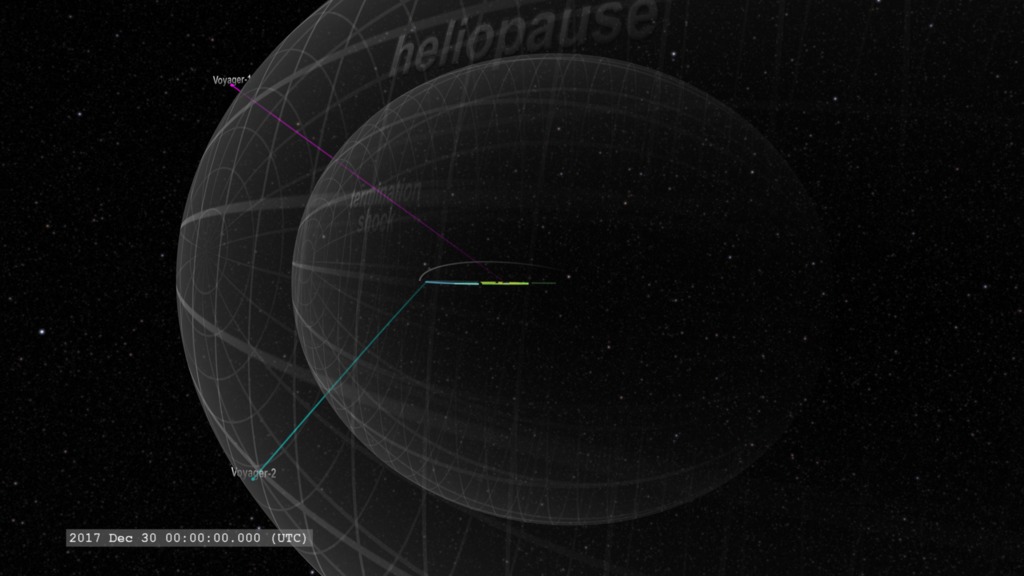Revisiting the Pale Blue Dot at 30

“Look again at that dot. That's here. That's home. That's us.” – Carl Sagan
The iconic Pale Blue Dot is an image of Earth taken from approximately 4 billion miles (6 billion kilometers) away by NASA’s Voyager 1 spacecraft on February 14, 1990. Earth is captured as a tiny speck in a beam of scattered sunlight, inspiring Carl Sagan to think about the fragility and uniqueness of our home planet, "a pale blue dot."
Earth lies right in the center of one of the scattered light rays resulting from taking the image so close to the sun. In celebration of the 30th anniversary of one of the most iconic images of Earth, NASA processed a new version of Voyager's "Pale Blue Dot."
Voyager 1 reached interstellar space in August 2012 and is the most distant human-made object in existence.
In this animation, the camera flies out of the solar system to reveal the locations of both the Voyager spacecraft and the structures of the heliosphere.

Called “Pale Blue Dot,” Voyager 1 took this image of Earth on February 14, 1990 from a distance of about 4 billion miles. The planet is just 0.12 pixels.
Follow Voyager 1’s trajectory through the solar system.

The picture of the Earth and Moon in a single frame, the first of its kind ever taken by a spacecraft, was recorded September 18, 1977, by NASA's Voyager 1 when it was 7.25 million miles (11.66 million kilometers) from Earth.
Where does the solar system end? It all depends on the criteria you are using.
For More Information
See the following sources:
Credits
Please give credit for this item to:
NASA's Scientific Visualization Studio
Image credit: NASA/JPL-Caltech
-
Writer
- Rebecca Roth (InuTeq)
Release date
This page was originally published on Friday, February 14, 2020.
This page was last updated on Wednesday, May 3, 2023 at 1:45 PM EDT.


